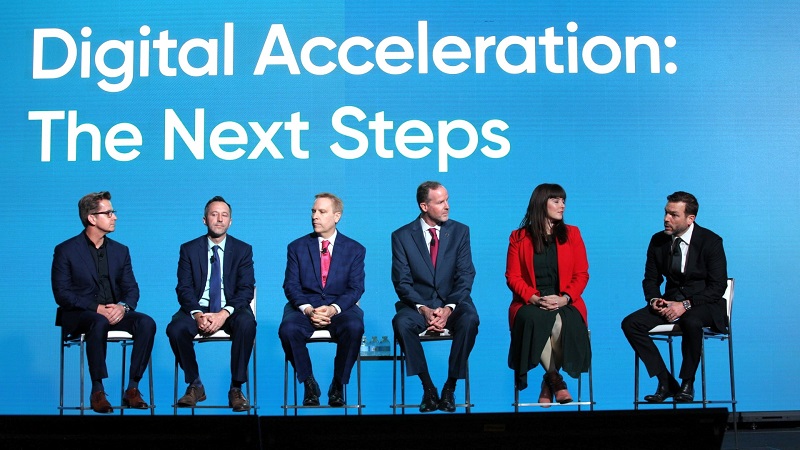
For several years, the Federal government has been on a digital transformation journey to deliver frictionless citizen services, enhance workforce efficiency, and empower secure innovation across agencies.
So, what’s next? Increased focus on hyperautomation and data to accelerate digital transformation and sustain innovation, according to several Federal officials at today’s ServiceNow Federal Forum in Washington, D.C
Hyperautomation: The Next Step in Digital Transformation
Hyperautomation – increasing business processes automation by introducing artificial intelligence (AI), machine learning (ML), and robotic process automation (RPA) – is a vital next phase in the Federal government’s digital transformation agenda, according to Dan Wallace, the area vice president for Federal Civilian at ServiceNow.
Gary Novotny, the chief of the Program Management Office at the CIA, concurred.
“We can all agree – at least in the intelligence community- that our goal is to keep our officers on the mission. Hyperautomation is automating a lot of business processes that would typically pull officers from missions for extended periods,” Novotny said. “Whether it’s using a knowledge base or an AI ML, automating business processes get the officer back to the mission.”
At the CIA, Novotny explained, hyperautomation has already been implemented. One example he offered was in the agency’s human resources department.
The department was an early adopter of ServiceNow’s automation capabilities and created a roadmap of how they planned to automate approximately 90 business processes. Currently, the CIA’s human resources department has automated about 40 to 50 business processes, cutting down the time it took to conduct simple tasks and better serve intelligence officers.
“Automating these processes helped the customer – in our case intelligence officers – experience and it gets those officers back to the mission quicker which is pivotal for our purpose,” Novotny said, reiterating that hyperautomation is a clear next phase in the government’s digital transformation agenda.
Simply put, AI MLA and RPA are here to stay, so Federal agencies need to stop fearing it and begin to understand it, Novotny explained.
Sean Brune, the chief information officer and deputy commissioner for systems at the Social Security Administration (SSA), also reiterated the critical step of hyperautomation for Federal agencies’ digital transformation agenda.
Brune explained that for Federal agencies such as the SSA, who have over the years accumulated technical debt and a multitude of diverse missions, hyperautomation offers a “critical opportunity to provide a better customer experience and ensure agencies execute for mission responsibility better than in the past.”
“As I mentioned previously, accelerating digital transformations requires good governance and a good data pipeline. But connecting those two values with hyperautomation, maybe we can change the customer experience for the better,” Brune said.
Data Keeps Digital Transformation Going
By properly managing and understanding the data they acquire, Federal agencies can sustain innovation as they continue to transform digitally, officials explained.
“Data, and in particular data sharing, is crucial to ensure that digital transformation does not become a silo excellence,” said Chris Brazier, the acting deputy IT director for the Defense Threat Reduction Agency (DTRA).
“DTRA had to take into consideration how it could effectively share data with the users we serve as we worked to transform internally, and in our case, those users are combatant commands and other agencies within the Department of Defense (DoD),” Brazier added.
As a side note, Brazier explained that data sharing has become a crucial tactic not just at the DoD but across the Federal government. And an ongoing challenge that government leaders must confront is implementing good data governance to break down data silos and manage data effectively as the quantity continues to grow.
Lauren Boas Hayes, the senior advisor for technology and innovation at the Cybersecurity and Infrastructure Security Agency (CISA), agreed with Brazier, adding that for CISA, data is the lifeblood that keeps digital transformation going.
“As the nation’s cyber defense agency, we rely on the data that we gather to inform the decisions and actions we take moving forward,” Hayes said. “If we do not have measures in place that facilitates the way agencies can share information with us, we cannot properly conduct our mission.”
